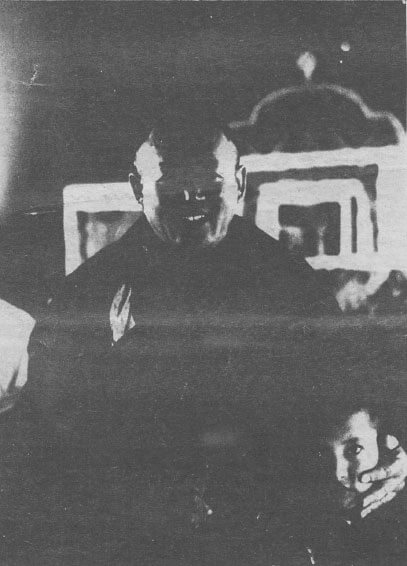| The following article is from the Winter, 1994 issue of the Snow Lion Newsletter and is for historical reference only. You can see this in context of the original newsletter here. |
His Holiness will be spending several months touring the Americas, giving teachingsespecially on the Fivefold Path of Mahamudra, which is one of the main practices of the Drikung Kagyu Lineage.
He wrote in his introduction to the Garland Of Mahamudra Practices (Snow Lion, 1986) Lord Gampopa drew together all of the teachings of the Buddha into one fivefold system. Gampopa's lineage holder and main disciple, Pakdru Dorje Gyalpo later named this teaching The Profound
Fivefold Path of Mahamudra. The Fivefold Path of Mahamudra is a complete path of meditation. The practitioner begins meditating on the common preliminaries, also known as the four ways of turning the mind. These are the precious human birth, impermanence, karma and its results, and the suffering of all samsara. Then the practitioner engages the extraordinary preliminaries: refuge, Vajrasattva purification, mandala offering, and guru yoga. Then begins the actual fivefold path with the practice of bodhicitta. Next is the meditation on the Yidam Chakrasamvara, the four kayas of guru yoga and the actual mahamudra itself.
To make this practice more widely available to people who do not have the time for the tra'ditional three year retreat, he has written a special practice text which he will be using for his teachings. In Search of the Stainless Ambrosia contains these teachings in addition to the practice of the four ways of turning the mind, and various Vajrayana meditations. In addition, Prayer Flags, the Life and Spiritual Teachings ofJigten Sumgon has a brief but very clear explanation of the path along with teachings on Mahamudra. The Great Kagyu Masters gives the life stories of the great masters of the mahamudra lineage and contain many profound teachings. These texts have all been translated by Khenpo Konchog Gyaltsen and are available from Snow Lion.
H.H. Chetsang Rinpoche was born in 1947 in Lhasa to the wellknown Tsarong family. In 1950, he was recognized as the incarnation of the Drikung Kyabgon, head of the Drikung Kagyu order. He received his religious vows from H.H. the Dalai Lama at the age of five in the Drikung Monastery.
In 1959, His Holiness was forced to leave the monastery and live in Lhasa with one of his former tutors. From 1960 to 1969, he was a student in the Chinese schools and later worked in communes in Central Tibet. These years became an invaluable experience for learning about the Tibetan spiritual and temporal condition in a changed society.

In 1975, he escaped to India. A large number of his followers gathered at Dharamsala to celebrate his miraculous escape. He also visited the US that year and founded the first Drikung Kagyu centernow located in Frederick, MD.
He resumed his formal religious training in order to rekindle the embers of the Drikung Kagyu lineage in more than 100 monasteries outside of Tibet such as Lama Yuru Monastery and Phiyang Monastery in Ladakh.
In 1979, the 800th anniversary pa, Milarepa, Gampopa, and Phagmo Drupa. The Drikung Kagyu lineage incorporates the teachings of all three levels of Buddhism but is especially known for those of the phowa, mahamudra, and the Six Yogas of Naropa.
His Holiness will be making another international tour this year. He will be in the Americas from April to October. He will be giving teachings on the fivefold path ofmahamudra and empowerments for the practice of phowa, chod and Milarepa in many different locations. Contact: Tibetan Meditation Center, 9301 Gambrill Park Rd., Frederick, MD 21702, 301-473-5750.

